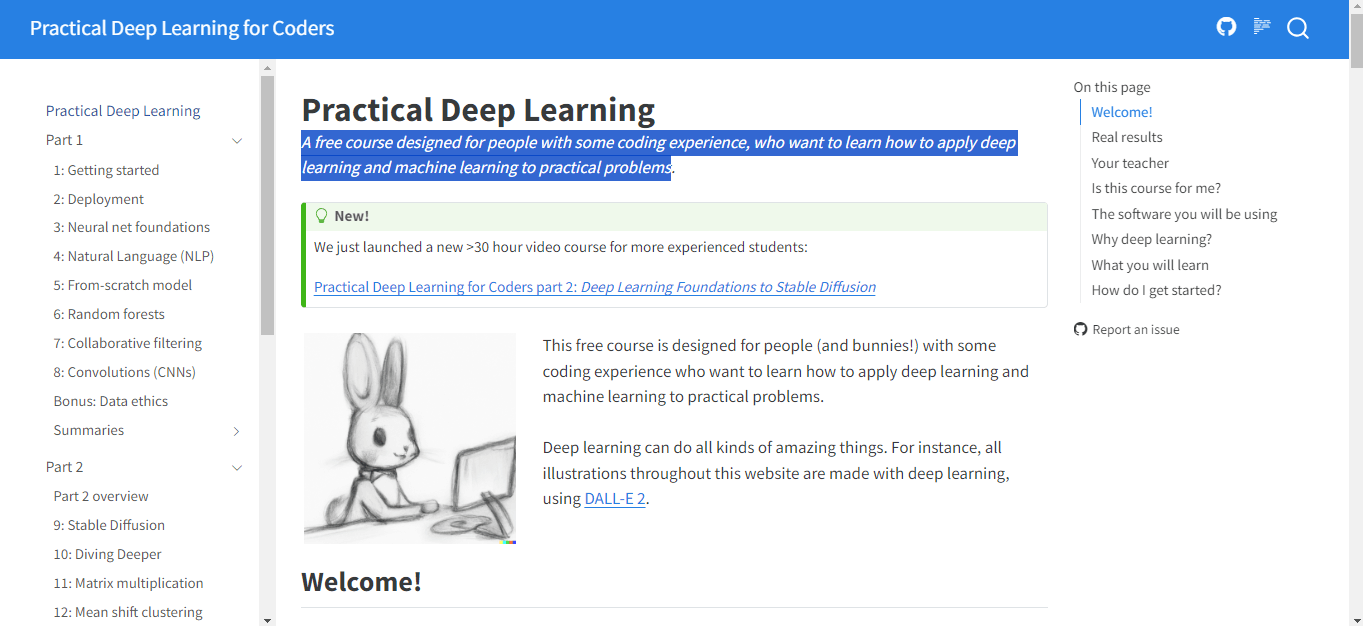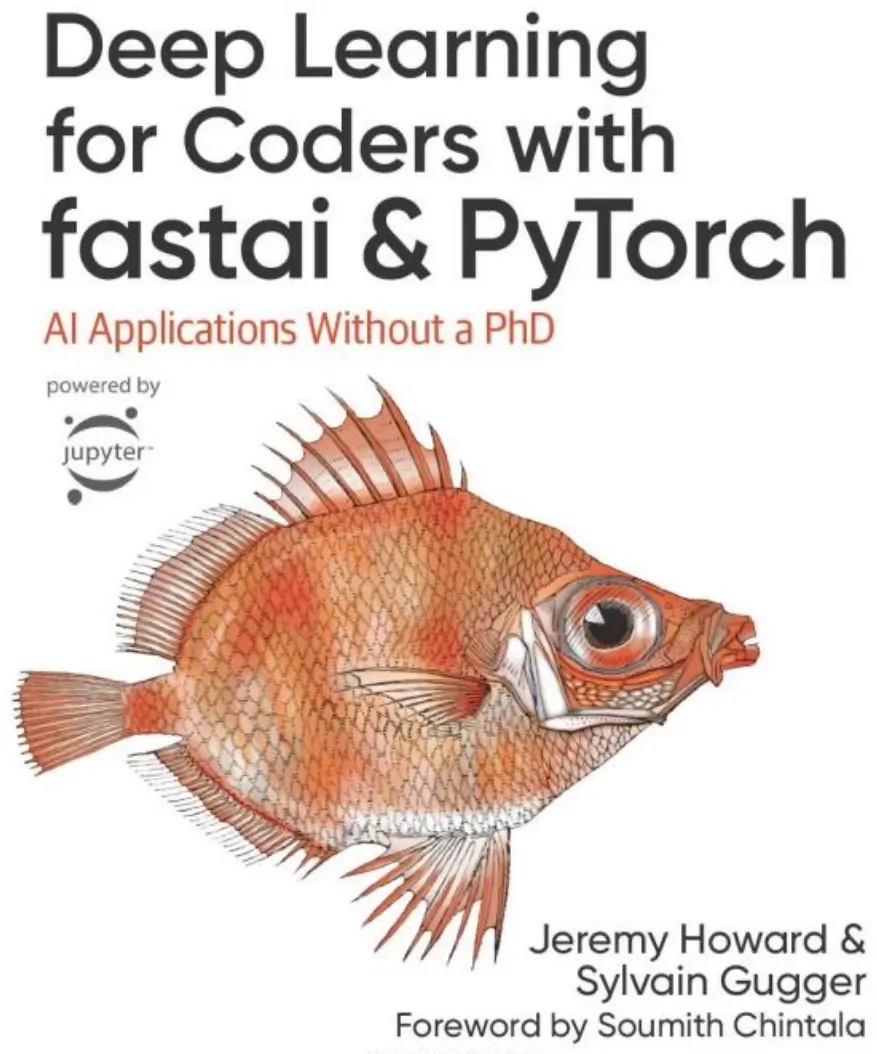This page has moved. If you are not redirected, click here.
Introducing fastai-Practical deep learning without a PhD
In case you ever have to do Deep learning or interested in building applications with neural networks in a hands-on way you can check out fastai by Jeremy Howard.
Practical Deep Learning
“A free course designed for people with some coding experience, who want to learn how to apply deep learning and machine learning to practical problems.”
 What you’ll learn:
What you’ll learn:
- Build and train deep learning models for computer vision, natural language processing, tabular analysis, and collaborative filtering problems
- Create random forests and regression models
- Deploy models
- Use PyTorch, the world’s fastest growing deep learning software, plus popular libraries like fastai and Hugging Face
Book: Deep Learning for Coders with Fastai and PyTorch: AI Applications Without a PhD

This is the book that forms the basis for the course. It is recommended to read this as you complete the course. There’s a few ways to read the book – you can buy it as a paper book or Kindle ebook, or you can read it for free online. The whole book is written as Jupyter notebooks, so you can also execute all the code in the book yourself.
Google’s Director of Research, Peter Norvig, says “The book does an impressive job of covering the key applications of deep learning in computer vision, natural language processing, and tabular data processing, but also covers key topics like data ethics that some other books miss. Altogether, this is one of the best sources for a programmer to become proficient in deep learning.”
Here is a breakdown of the chapters:
- Chapter 1, Intro
- Chapter 2, Production
- Chapter 3, Ethics
- Chapter 4, MNIST Basics
- Chapter 5, Pet Breeds
- Chapter 6, Multi-Category
- Chapter 7, Sizing and TTA
- Chapter 8, Collab
- Chapter 9, Tabular
- Chapter 10, NLP
- Chapter 11, Mid-Level API
- Chapter 12, NLP Deep-Dive
- Chapter 13, Convolutions
- Chapter 14, Resnet
- Chapter 15, Arch Details
- Chapter 16, Optimizers and Callbacks
- Chapter 17, Foundations
- Chapter 18, GradCAM
- Chapter 19, Learner
- Chapter 20, Conclusion
There’s also a youtube playlist if you prefer videos.
I have embedded the introductory video below so you can get started right away.
The usual way of building deep learning models
The traditional way of building deep learning models using a framework such as pytorch or tensorflow could take a lot of time to build and train models. In my experience the student might have to go through a lot of theory before they even build their first useful model.
Fastai does the opposite where they show you how to build models and solve problems to give an understanding of what’s possible then dive into the theory and its underpinings.
Want more? Part 2
This is actually part 1 of the fast ai course which gets you up to speed with practical deep learning. Part 2 of the course goes more in depth. Link to part 2
It’s a 30 hour video course for more experienced students: